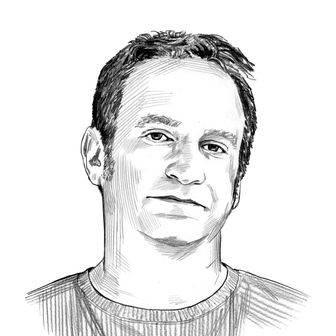
Mass protests at Hong Kong’s central airport, directed mostly at the region’s police force, caused the cancellation of all outbound flights from the increasingly restive city on Monday, as China showed more signs that it could forcefully intervene in the chaos that has gripped the city for months.
More than 200 flights overall were scratched as thousands of protesters, who gathered at Hong Kong International Airport for the fourth day in a row, held up signs and chanted slogans. As confused and exasperated travelers streamed in and out of the airport, some demonstrators, holding up anti-police signs, apologized for the inconvenience.
Late on Monday night, most of the protesters had dissipated, and it’s not clear whether they’ll be back on Tuesday. Hong Kong’s airport, one of the world’s busiest, hosted 400,000 flights and 75 million passengers last year.
The mostly peaceful airport demonstrations followed two days of often violent turbulence in Hong Kong. This was the 11th straight weekend of conflict between protesters, who want to maintain Hong Kong’s tenuous semi-independence from Chinese rule, and police, who have sometimes responded to mounting chaos with heavy-handed tactics — including on Sunday night, when they fired tear gas into a subway station, launched nonlethal projectiles at protesters making their way down an escalator, and shot a bean-bag round into a woman’s eye, which protesters say will cause permanent blindness. The action at the airport on Monday was a direct response to those incidents.
The spark that led to the initial demonstrations back in June was a proposed law that would allow easier extradition of Hong Kong citizens to the Chinese mainland. In the face of massive street demonstrations, Hong Kong chief executive Carrie Lam — who is heavily influenced by China — announced that the law would be temporarily withdrawn — a half-measure that did little to pacify Hong Kongers. Protesters say the law should be permanently scuttled and that Lam should resign, among other demands. China is unlikely to give in any further, and the protesters are similarly defiant, making the odds of a truly ugly confrontation higher.
Chinese officials have taken a mostly hands-off approach so far, but they have labeled the protests as “riots” and have accused the United States and other foreign actors of fomenting dissent. And there are signs that Xi Jinping’s government may be preparing harsh retaliatory action — despite the many risks associated with doing so.
“Radical Hong Kong protesters have repeatedly used extremely dangerous tools to attack police officers,” Yang Guang, a spokesman for the Chinese government’s Hong Kong and Macau Affairs Office, said. “The first signs of terrorism are starting to appear.”
The warning signs to Hong Kongers included more than just words. The Global Times, a state-controlled Chinese newspaper, circulated clips of armed vehicles preparing for a military exercise in Shenzhen, a city on the mainland near the Hong Kong border.






























